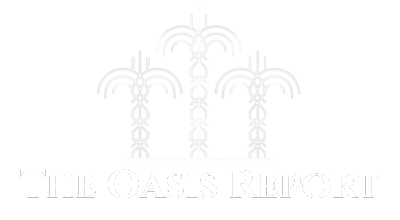The US Dollar Index’s 9 percent fall in the first four months of 2025 was its worst performance in 52 years. The month following “Liberation Day” saw a spectacular 4 percent slide in the world’s reserve currency.
The greenback lost its traditional role as a safe-haven currency even as tariff angst triggered a spectacular fall in global stock markets and risk assets.
The Volatility Index rose as high as 60 and a trillion-dollar basis trade gone horribly wrong debilitated the US Treasury bond market, unnerving foreign central banks which view the US dollar and Uncle Sam’s IOUs as a primary reserve asset.
April 2025 was thus a game-changer event in the international monetary regime. Nineteen trillion dollars in foreign-owned assets are now scrambling to reduce their exposure to President Trump’s erratic policy cocktail of trade protectionism, economic nationalism and geopolitical isolationism.
The human brain is not programmed to play three-dimensional chess in the foreign exchange market
Investors in the GCC must hedge the dollar depreciation risk inherent in owning local shares, property and operating business assets.
In a world where the dollar can lose 9 percent of its value in only four months, doing nothing is an unacceptable risk. Risk is a four-letter word in volatile global markets – but then so is ruin.
The human brain is not neurologically programmed to play three-dimensional chess in the foreign exchange market.
But a multi-currency risk management mindset is now essential for the survival of GCC private players, banks, corporates and sovereign institutions as Trumponomics’ Dollar Dump mesmerises investors.
Even though the US dollar will remain the dominant global reserve currency, it remains overvalued by 18 percent on econometric models developed by the macro team at Goldman Sachs.
However, in May animal spirits in the Nasdaq have been reawakened by Microsoft’s announcement of impressive 33 percent growth in its Azure cloud platform and the stronger-than-expected addition of 170,000 jobs to the US economy in April – well above Wall Street’s consensus estimate of 133,000.
Adding to the upbeat tone, Trump dialled back his typically harsh rhetoric on China and Fed chair Jay Powell, contributing to a subdued bid for the US dollar.
As a result, the euro remains just below recent highs at 1.1350, sterling is trading at 1.33 on the cable and the yen has weakened to 144. Meanwhile, gold has stabilised just below its all-time high of $3,500 an ounce, currently hovering slightly above $3,200.
That said, in my opinion, the die is cast for the dominance of dollar bears on Planet Forex. Geopolitics, trade, relative growth rates, risk premia and FX options all suggest that the euro can well rise to 1.20 by year-end.
Japanese yen ‘most undervalued’
At the same time, Goldman Sachs’s “Britannia Rocks” forecast predicts a 1.39 year-end target for cable.
The Japanese yen is the most undervalued major currency against the US dollar as inflation rates surge in the Empire of the Rising Sun even as the cherry blossoms bloom on Mount Fuji and the Bank of Japan remains the only G-10 central bank committed to a monetary-tightening agenda.
I will resist the temptation to finance risk asset purchases through a carry trade – a staple in the GCC private banking toolkit – given that most Wall Street economists estimate the fair value of the yen is as high as 120.
This level is expected to be reached once the Bank of Japan is ultimately compelled to resume interest rate hikes in Tokyo’s money markets. Consequently, a weaker US dollar could drive gold prices higher, potentially reaching $3,800 to $4,000 an ounce by year-end.
It is no coincidence, then, that Goldman Sachs’ chief commodities strategist advises investors to hedge against US recession risk by purchasing put options on Brent crude – which has now dropped to just $61 a barrel – while simultaneously buying call options on gold.
Investors may also want to seek tariff-safe havens in the emerging market FX constellation. The Singapore dollar is a natural haven asset at 1.30, as the Lion City is Asia’s capital markets and private wealth management hub and a magnet for flight capital from China and the Association of Southeast Asian Nations bloc.
In the Asian money markets, the Singapore dollar is a wealth safe haven, akin to the Swiss franc for Europe.
Two other Asian currencies are also notable for their undervaluation due to recent macro trauma.
Strong Silicon Valley technology earnings, optimism about a US-China trade deal and strengthening domestic data converged to boost the Taiwan dollar by an incredible 3 per cent in a single trading session – its best one-day performance since 1988.
In contrast, South Korea’s won has suffered amid a cascade of political and economic turmoil creating what appears to be a value opportunity for contrarian investors.
Matein Khalid is an investor in global financial markets and board adviser to leading family offices in the UAE and Saudi Arabia



